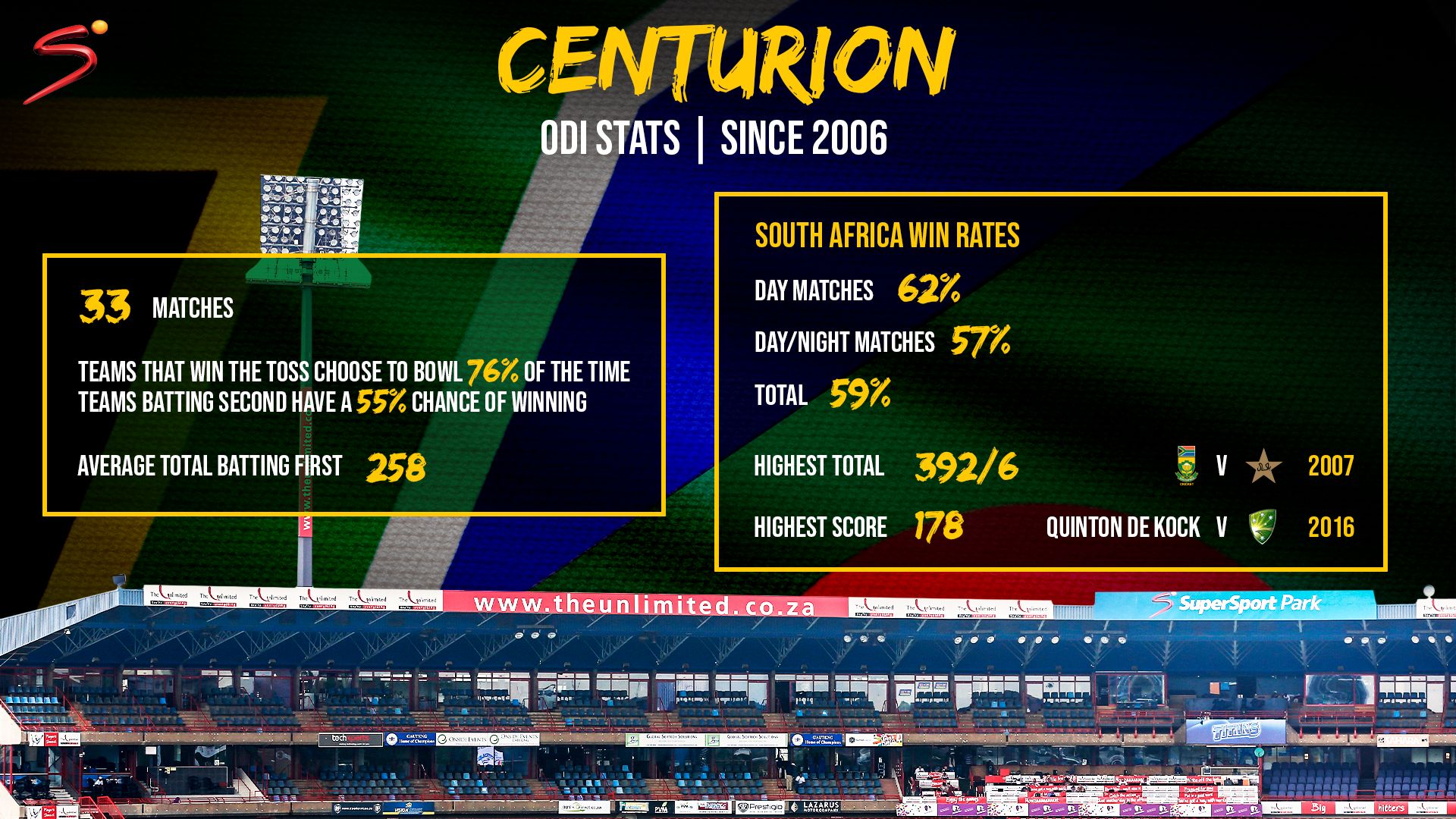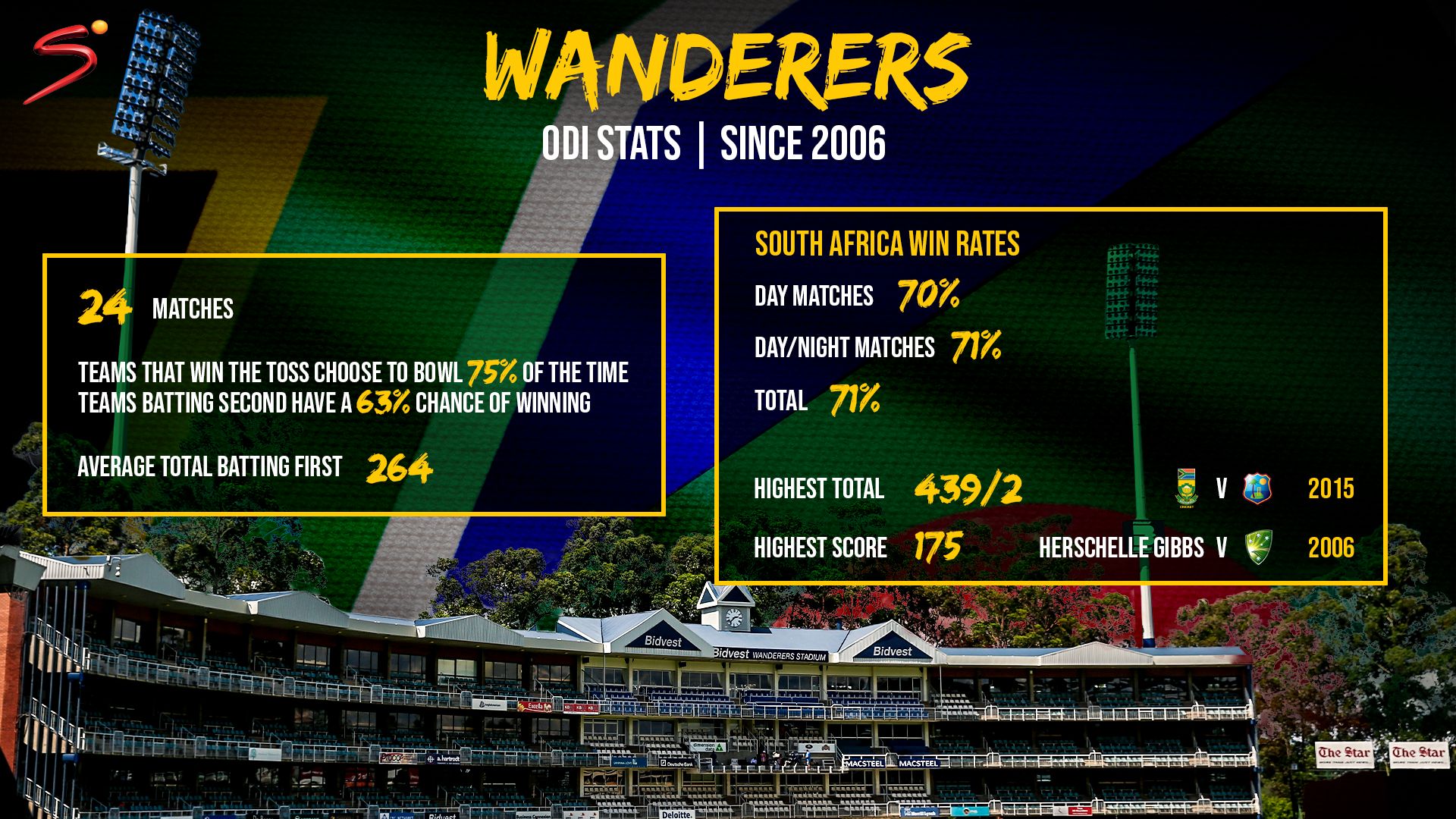SuperSport Park & The Wanderers - where dreams are made

Venues are sometimes being discarded as just the spot on a map where the much more important event takes place. But venues have so much more to offer: they have so much history, and they play so often an integral part in which players are selected, and how a lot of matches are decided.
Teams and players have their favourite venues, for a variety of reasons, and these are the places where dreams are made and records are shattered.
Prior to the start of the series, we are taking a look at the venues for the three ODIs.

SUPERSPORT PARK
The venue for the first and third ODIs, SuperSport Park represents a big promotion for Bangladesh who have thus far largely been hosted at second-tier grounds on their three visits to South Africa in 2002/3, 2008/9 and 2017/18.
This time they will play the three-match ODI series at the attractive, well-attended ground in Centurion as well as the Imperial Wanderers, the nation’s flagship venue, while the two tests will be played at the well-established Hollywoodbets Kingsmead in Durban and St George’s Park in Gqeberha.
SuperSport Park began its life as Centurion Park in 1986 after it was recognised that the ageing Berea Park in Pretoria was no longer suited to provincial cricket for Northern Transvaal (now the Momentum Multiply Titans) and potentially international cricket. The new multi-purpose venue quickly became one of the most family- and spectator-friendly venues in the country, characterised by its sprawling grass embankments dotted by beach cabana-style hospitality chalets. Its major northern stand has particularly good sightlines while the floodlights have been upgraded to world-class standard.
The ground hosted its first one-day international in December 1992 when India made their historic first tour of post-apartheid South Africa.
Centurion became SuperSport Centurion Park in 1998 when the television company bought shares in the ground, and now it is simply known as SuperSport Park.
Blessed with a capacity of 22 000, the ground has been rated as one of the 10 best in the world by India’s legendary allrounder Kapil Dev. It is known for having one of the quicker pitches in South Africa with good bounce, while it also offers plenty of opportunities for batsmen with the ball usually coming nicely onto the bat.
Among the highlights of its relatively brief history, SuperSport Park hosted five matches in the 2003 Cricket World Cup and was a particularly popular venue for the 2009 Indian Premier League that was hosted in South Africa. One of its finest moments was the hosting of the final of the ICC Champions Trophy in 2009 when Australia beat New Zealand by six wickets.
From a South African individual perspective, the ground offers particularly happy memories for Quinton de Kock who smashed 178 in just 113 balls, including 16 fours and 11 sixes, as the Proteas reached their winning target of 295 with 13.4 overs to spare. His scintillating demolition job remains the biggest and fastest knock in an ODI at the ground. South Africa’s highest total at the ground is 392 for six against Pakistan in 2006/7.
SCHEDULE
1st ODI: SuperSport Park, Friday, 18 March.
3rd ODI: SuperSport Park, Wednesday, 23 March.
Both are day/night matches starting at 1pm CAT (SA, GMT+2) and will be live on SSCricket thirty minutes prior to the first ball.

THE WANDERERS STADIUM
Affectionately nicknamed ‘The Bullring’ partly because the design is said to resemble a bull-fighting arena but mostly because of the intimidating atmosphere experienced by visiting teams.
Built in 1956 to replace the ‘Old Wanderers’ it has a capacity of 34 000, comfortably the largest cricket ground in the country. The ‘Old Wanderers’, incidentally, hosted 22 test matches between 1895 and the start of the second World War in 1939.
The new stadium underwent a complete overhaul in 1991 in time for the country’s return to international cricket and had five 65-metre floodlight masts installed five years later to replace the four which had stood in their place at less than half the height. Day-night cricket was transformed from a gloomy affair to one of the most powerfully lit stadiums in the world.
The stadium has witnessed a number of unusual and record-breaking events including a rugby test match between the Springboks and the South American Jaguars in 1980 while Ellis Park was being redeveloped. The Cricket World Cup final was held at the Wanderers in 2003 – Australia thrashed India by 140 runs – and in 2009 the stadium played a pivotal role in hosting the Indian Premier League staging one of the semifinals and the final in which the Deccan Chargers beat the Bangalore Royal Challengers.
On the 12th March 2006 what is commonly referred to as the ‘Greatest ODI’ was played in which South Africa chased down Australia’s total of 434 reaching 438-9 off the final ball of the match to clinch a five-match series 3-2.
The ground’s reputation for quick and high scoring was enhanced even further in 2015 when AB de Villiers shattered the records for the fastest ODI 50 (16 balls) and 100 (31 balls) during an innings of 149 from just 44 deliveries against the West Indies.
In recent years the Wanderers has led the way in diversifying its income stream by maximising its conference-hosting capabilities and playing landlord to a number of small, sports-related businesses. In 2018 it even hosted former US president, Barack Obama, who delivered the Nelson Mandela Lecture.
SCHEDULE
2nd ODI – the “Pink ODI”: Wanderers Stadium, Sunday, 20 March
This is a day match, starting at 10am CAT (SA, GMT+2) and will be live on SSCricket thirty minutes prior to the first ball.
Advertisement
